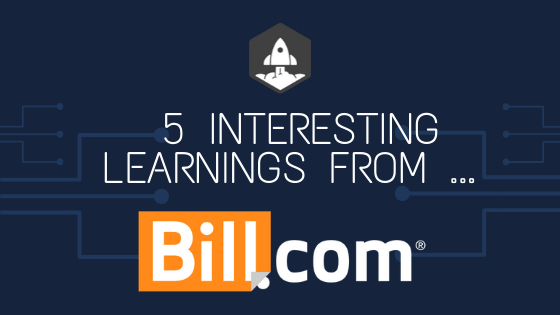Bill.com is a bit — OK, maybe a lot — more lower profile than many of the SaaS Unicorns to IPO lately, but it’s one of my personal favorites. Why? First, we run SaaStr on Bill.com. We wouldn’t be able to approve bills, get paid, and pay our vendors effectively without it. I love Bill.com as a product. Also, Bill.com got started about the same time as Adobe Sign / EchoSign and I got to know second-time CEO Rene Lacerte a bit over the years and always thought he was both outstanding and very genuine salt-of-the-earth. So I’m a fan.
NYSE Opening Bell 🔔: @billcom (NYSE: BILL) celebrates their IPO day https://t.co/BCMhdxvjSq
— NYSE 🏛 (@NYSE) December 12, 2019
So what can learn from this somewhat quiet IPO, a full 14 years (!) after founding?
1. Bill.com took a while to get going — and then it accelerated. Yes, it can and does happen. You can grow faster later. Bill.com was growing 56% as it passed $100m in ARR!! Pretty impressive! But it took 14 years to get there. You don’t need to be a math whiz to see that means it started slow and then truly accelerated only once scale was hit.

2. 110% Net Revenue Retention and 82% Customer Retention from 81,000+ SMB Customers. Bill.com sells to very small businesses that do churn at a higher rate. But that also proves that’s no excuse to drop below 100%+ net revenue retention. Bill.com manages 110% Net Revenue Retention on 82% Customer / Logo retention. It is also increasing Net Revenue Retention, from 106% in 2018 to 110% in 2019.
3. Revenue Growing Much Faster Than Customer Count. Bill.com only grew its customer count 21% in 2019, but grew its revenue 56%. That’s similar to PagerDuty and many other leaders that provide more and more value to their existing customers. In the case of Bill.com, it also helps that its customer’s payment volumes increased 42% last year. Take truly great care of your customers, and as you scale, they’ll buy more from you. Almost always.
4. Being a Partial “Fintech” Can Really Help Boost Revenues. While Bill.com revenue overall grew nicely last year, a huge chunk of that was due to interest on funds held by customers. Shopify and others have shown being a payment processor and a bit of a fintech on top of a SaaS company can be a very powerful combination:
5. Second Order Revenue and Word-of-Mouth Power Bill.com’s Customer Growth Now. We’ve been talking about this for years on SaaStr, and Bill.com is a great case study. According to them, “half of new customer respondents indicated they first heard about us because they used our platform at a prior company, or heard about us through a colleague.” Half of Bill.com’s customers now come from word-of-mouth. That takes a little while to pick up steam. You need a decently sized, and happy, customer base for this to take off. But once it does, it becomes impossible to stop if you nurture it.
Finally, one last note: Bill.com only has 544 employees at well north of $100m+ in ARR. Yes, you can do it this way. If you want to.



